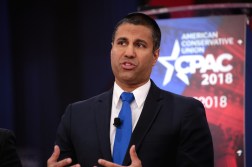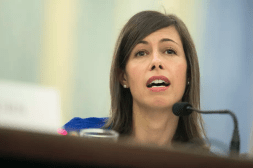Pressure intensifies on IES for long-delayed ‘homework gap’ report

The federal Institute of Education Sciences (IES) is nearly eight months late on delivery of a report that would detail nationwide student home access to digital learning resources, and a coalition of education groups says the delay is hurting efforts to address the “homework gap.”
The Consortium for School Networking (CoSN), Alliance for Excellent Education, the Association of National State Boards of Education and 17 others sent a public letter to Thomas Brock, acting director at IES, inquiring about the status of the report. The coalition says the federal report would “help policymakers identify the best ways to ensure all students can connect with broadband services and be on a path for success after graduation.”
The focus of the report is the “homework gap” — the inequities in digital learning created by students who have high-speed broadband at school but not at home.
In December 2015, President Barack Obama signed the Every Student Succeeds Act (ESSA), which included a directive for the IES to commission a report to examine the gap. IES — the statistics, research and evaluation arm of the U.S. Department of Education — was given 18 months. The deadline came and went in June 2017.
In a statement to EdScoop, an IES official said the report is currently undergoing scientific review and is expected to be published in March or April. It’s the first time IES has attached a publication date to the report, CoSN CEO Keith Krueger confirmed to EdScoop.
Krueger believes that the coalition’s letter prompted IES to finally come forth with a timeframe for publishing the research, which is a welcome announcement for education groups and school officials who will rely on this data to develop policy and better understand their districts’ broadband inequity.
Chip Slaven, senior advocacy adviser at the Alliance for Excellent Education, which signed the letter, said he is confident about what the report will reveal.
“It’s going to say that there’s a problem, that there’s a need, and that we need to take steps to improve it,” Slaven told EdScoop.
A number of recent studies support Slaven’s — and the overwhelming majority of the education community’s — stance on the matter.
CoSN and the Alliance co-authored a report in May 2017 that showed that 7 in 10 teachers assign homework that requires broadband access in some capacity, but 1 in 3 households don’t subscribe to any broadband service, putting students in these households at a significant disadvantage. A 2015 study from the Pew Research Center offered similar findings, revealing that nearly 5 million households with school-aged children don’t have any broadband access.
“When you have 50 percent of students who can’t do their homework at night because they lack internet or computer access, that’s a huge problem,” Slaven said.
“Congress had a deadline for their homework at the Department of Ed, and they are now eight months late,” CoSN’s policy consultant Reg Leichty told EdScoop. “They either get an ‘incomplete’ at this moment, or an ‘F.’ At least now they’re saying they are going to complete it.”
The spring timeframe is, coincidentally, when many education advocates suspect the Federal Communications Commission (FCC) will vote on its proposal to roll back the Lifeline program, a subsidy to help low-income households access affordable communication services.
The Lifeline program was created in 1985 with the mission of providing telephone service to rural and low-income households through a monthly subsidy, and expanded in 2016 to give families the option to use the subsidy — generally $9.25 a month per household — toward broadband access.
Lifeline — thought not a “silver bullet” for solving digital inequity, as Slaven put it — is critical in making sure the homework gap doesn’t grow even wider. The 2015 Pew study found that “low-income homes with children are four times more likely to be without broadband than their middle- or upper-income counterparts.”
Almost 12.5 million people use the program nationwide. The FCC voted to scale down the program back in November, and the window for public comments closed on Jan. 24. Among the proposals that were open to public comment was a ban on telecom resellers, or telecom providers that don’t have their own network infrastructure.
FCC Commissioner Mignon Clyburn, a Democrat, said that the reseller ban could affect 70 percent of all Lifeline users, forcing them to find new providers — if any exist in their regions. Finding new providers could prove financially impossible for these Lifeline users, as the FCC also said that it is considering public comment on a proposal that would require state approval for telecom providers to participate in the Lifeline program. Krueger and Slaven said that a state-by-state approval system would discourage the companies from going through the process at all. This could effectively leave former Lifeline users with no access to affordable telecom services, Krueger and Slaven said, and would be a major step backward for digital equity.
“The decision [to scale back Lifeline] doesn’t make any sense,” Slaven told EdScoop.
“This problem isn’t going to go away until we have better technology access and better infrastructure … but when you have a Band-Aid on the problem, at least its something,” he added. “Right now, we’re kind of bleeding to death.”




